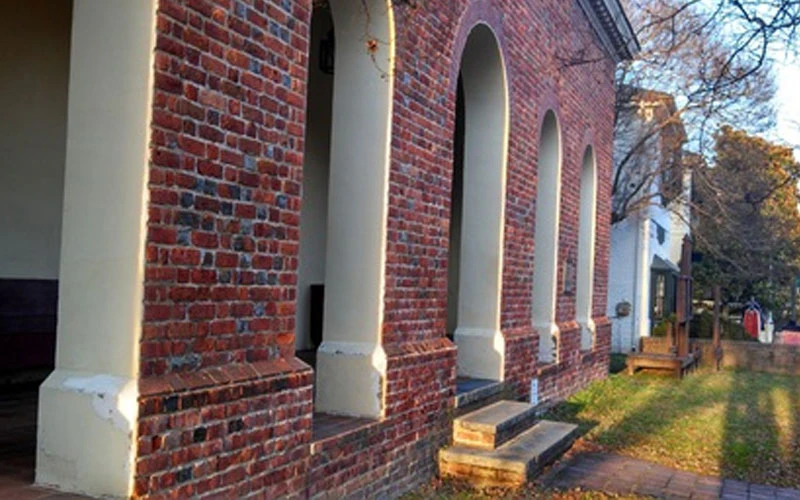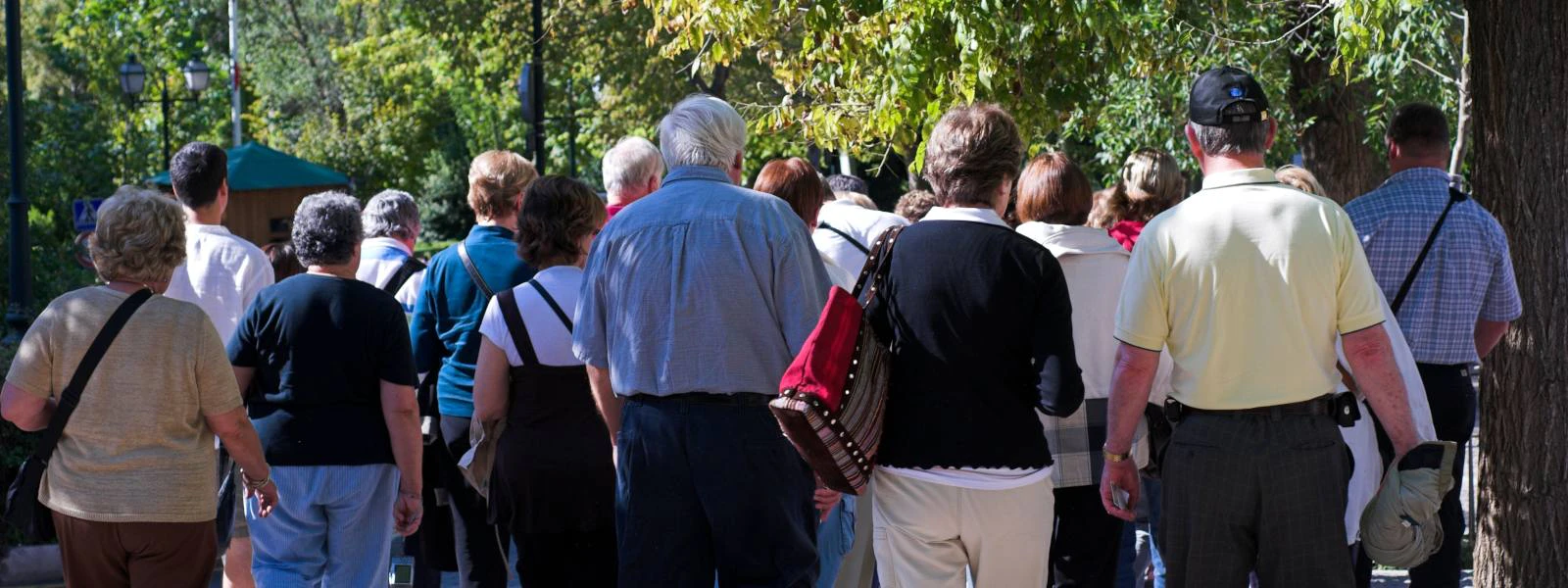Smithfield was, from its very beginning, a “river town.” Its whole life and growth has been defined by the river.
The Warraskoyack tribe were the first known inhabitants. You would really impress visitors if you knew how to pronounce the name of the area's original peoples! It's not really that hard!

The first European settler to own land in Isle of Wight County was Arthur Smith. On September 10, 1637, he patented 1,450 acres, described as “a neck of land running southeast along a creek behind the Pagan Shore.” Today a portion of this same land and manor house (dubbed “Windsor Castle” and built by Smith’s descendants) are part of Windsor Castle Park.
Settled primarily by British merchants and ships' captains, Smithfield thrived for more than 20 years as a river port town and a British colony before the signing of the Declaration of Independence.
It was Arthur Smith IV, who, in 1750, had the land surveyed and laid out as a town. Smithfield derives its name from this Smith family, not from John Smith of Jamestown fame. Within two years after the town was established, and before the Revolutionary War, all of the lots were sold. Each lot sold for four pounds, six shillings.
Today the town boasts fifteen houses that are authentically 18th century, ten of which pre-date the Revolutionary War. In the early 19th century, a number of excellent Federal period homes were built, but it was after the Civil War, in about 1876, that the big building boom began. It was in this era of steamboats and the flourishing peanut industry in Smithfield that many of the elaborate Victorian homes were erected. Their ostentatious elegance of turrets, towers, stained glass windows and steamboat Gothic trimmings is easily evident.
On our walking tour of Genuine Smithfield’s old town district, visitors can see a harmonious blend of 18th century Colonial, Federal, Georgian, and Victorian period houses and buildings side by side.



Dates to know
| 1634 | Isle of Wight county is founded. Originally named Warraskoyack Shire, but since none of the English settlers could spell or pronounce this name, they promptly changed the name to Isle of Wight in 1637, after Isle of Wight, England. Isle of Wight was one of the first eight original shires. |
| 1752 | The Town of Smithfield is incorporated |
| 1767 | Mallory Todd arrives from Bermuda and creates the first ham company in Smithfield |
| 1926 | General Assembly of Virginia passes an act protecting the Smithfield Ham. The law states that all official Genuine Smithfield Hams must be made within the town limits of Smithfield, Virginia. |
| 2000 | Isle of Wight Tourism Bureau is dissolved and reorganized as a department of Isle of Wight County - "Smithfield & Isle of Wight Convention & Visitors Bureau." |
Historic things to do

Isle of Wight Historic Resources offers FREE guided walking tours of their area historic sites. Visitors love getting the inside story from our local historians. The specific dates and times are listed on the Isle of Wight County Museum website.
Guided tours can be arranged for groups and families if the Visitor Center is given enough notice. There is a small fee for group guided tours. Information is on the Groups and Guided Tours page of the Tourism website.
Another favorite activity for history buffs is the Genuine Smithfield Walking Tour. Visitors pick up a map at the Visitor Center with all the town's historic buildings listed and a brief description of each. You've probably seen folks walking around town with these maps. The maps also list the town's restaurants, shops and lodgers.
The tourism bureau hands these maps out only at the Visitor Center. We get our all-important count of visitors each day from the guests who actually enter the visitor center. If they don't come in, even if they spend the day with us, we don't count them. These numbers are used to determine how the tourism industry is doing in Smithfield. So as you can see, it's very, very important that you send your guests down to the Visitor Center to get the map and lots of other valuable information about the area.
Historic places to see
If your guests are interested in history, Smithfield & Isle of Wight County offer a great selection of sites.
Have you visited all our historic sites? If you haven’t, you’re missing out. Make it a point to visit them all. You’ll be impressed.
Check out what the County has to offer.

Isle of Wight County Museum
Isle of Wight County Museum offers local history with exhibits on prehistoric fossils, the Civil War, Native American and Colonial artifacts, a country store, smokehouse and the museum's most notable artifact - the world's oldest, edible cured ham. The 1902 pork product exemplifies the patented Smithfield curing process.
103 Main Street, Smithfield
(757) 356-1223, (757) 356-1014
Admission is a suggested donation of $2 per adult

Historic St. Luke’s Church and Museum
Historic St. Luke's Church, Virginia's Oldest Church - built in the 17th-century, is located four miles south of Smithfield's Historic District. Guided tours of this National Historic Landmark offer visitors the opportunity to explore over 480 years of its history including the ancient church building and stories of early American struggles for religious freedom and separation of church and state.
Take a picnic and enjoy strolling the 100-acres of manicured cemeteries and grounds. Leashed pets are welcomed on the grounds. Admissions to the museum vary.
The St. Luke's gift shop offers visitors unique souvenirs and gifts.
14477 Benns Church Blvd., Smithfield
(757) 357-3367
Guided tours are offered daily from February through December for a
nominal fee.
There is no fee to stroll the grounds

1750 Isle of Wight Courthouse
The Old Courthouse of 1750 is located on Main Street, right in the heart of Genuine Smithfield. Originally modeled after the Capitol Building in Colonial Williamsburg, the building is beautifully restored. One of its most unusual features is a circular apse, a unique architectural feature from the period.
130 Main Street, Smithfield
(757) 356-9016
Free Admission

Historic Fort Huger
Historic Fort Huger is known as the "Gateway to the Confederate Capital," and is located in the northern reaches of Isle of Wight County, just off route 10 and 8 miles from downtown Smithfield. The fort was strategically important during the Civil War as it was one of several forts protecting the Confederate Capital of Richmond. Visitors can view the ghost fleet on the James River, take a self-guided walking tour through the new trails and see the cannon mounted along the edges of the fort. Fort Huger is listed on the National Register of Historic Places.
The fort is open daily from 8:00 a.m. until dusk.
15080 Talcott Terrace, Smithfield
(757) 357-0115
Free Admission

Fort Boykin Historic Park
Fort Boykin Historic Park sits high on the bluffs of the James River about six miles west of Smithfield. Originally named "The Castle," it was later named for Maj. Francis Boykin, a local merchant and one-time sheriff of Isle of Wight County, who fought alongside George Washington. Construction was begun in 1623 to protect the colonists from the Indians and raiding Spaniards. The fort, built in the shape of a seven pointed star, remains essentially intact and is a well-preserved example of military architecture of the Civil War era.
The fort is open daily from 8:00 a.m. until dusk.
7410 Fort Boykin Trail, Smithfield
(757) 357-0115
Free Admission

Schoolhouse Museum
Schoolhouse Museum is an African-American History Museum of Public Education built in 1932. The museum was originally located in Chuckatuck, Virginia and was moved to Main Street in downtown Smithfield in February 2005 as part of the Jamestown 400th Anniversary Celebration. The Schoolhouse features period desks and books and displays and offers oral histories of those who attended the school.
Open Thursday, Friday & Saturday 12:00 noon - 4:00 p.m.
Closed Monday through Wednesday and Sunday and the month of January.
516 Main Street, Smithfield
(757) 365-4789
Free Admission

This facility is open by appointment only.
Boykin's Tavern Museum
Boykin's Tavern Museum was named after Major Francis Boykin, who served as a lieutenant with Patrick Henry and later camped with George Washington at Valley Forge. He inherited this land in 1780, as well as the house that had stood there since 1762. A smart businessman, he donated land for the Isle of Wight Courthouse of 1800 and even helped pay for the original courthouse, which is still standing and being used today, as well as the new jail. His tavern was conveniently located right next door for meals and refreshments needed by court officers and personnel, curious observers and travelers.
Open for self-guided tours Wednesday through Friday from 11:00 a.m. until 4:00 p.m. and by appointment on Saturdays.
17130 Monument Circle, Isle of Wight
(757) 365-9771
